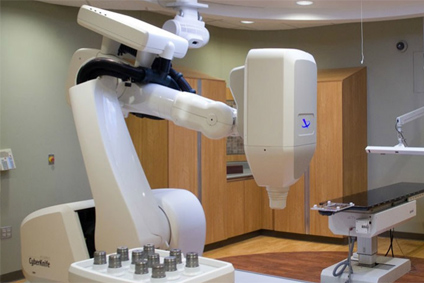|

History of the CyberKnife
John Adler, MD, developed the first CyberKnife at Stanford in 1994.
The CyberKnife was approved by the U.S. Food and Drug Administration
in 2001.
First, the CyberKnife System uses image guidance software to track
and continually adjust treatment for any patient or tumor movement.
This sets it far ahead of other similar treatments. It allows
patients to breathe normally and relax comfortably during treatment.
Second, some forms of radiosurgery require rigid head-frames that
are screwed into the patient’s skull to minimize any movement. The
CyberKnife System does not require such extreme procedures to keep
patients in place, and instead relies on sophisticated tracking
software, allowing for a much more comfortable and non-invasive
treatment.
Third, unlike some radiosurgery systems, which can only treat tumors
in the head, the CyberKnife System has unlimited reach to treat a
broad range of tumors throughout the body, including the prostate,
lung, brain, spine, liver, pancreas, and kidney.
And finally, the CyberKnife System’s treatment accuracy is
unrivaled. Its ability to treat tumors with pin-point accuracy is
unmatched by other radiation therapy and radiosurgery systems. The
CyberKnife System can essentially “paint” the tumor with radiation
allowing it to precisely deliver treatment to the tumor alone,
sparing surrounding healthy tissue.
.
The CyberKnife System
History of the CyberKnife
International Patients
Sources: http://med.standford.edu - http://cyberknife.com
|





